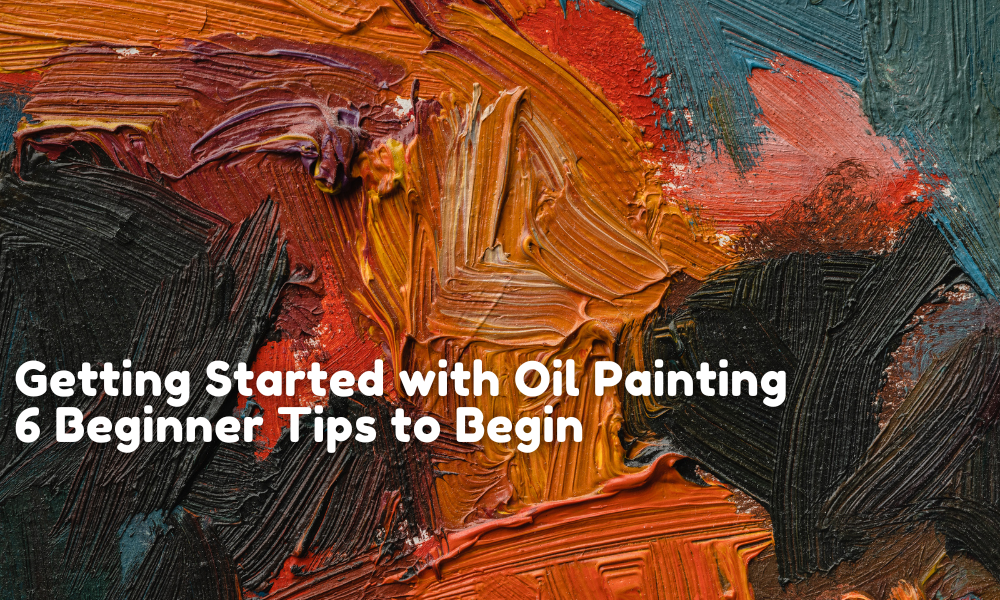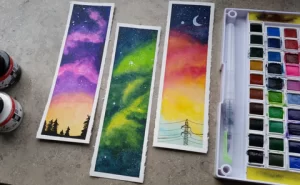Mastering any form of painting demands a considerable amount of dedication, practice, and attention to detail before achieving your desired artistic expression. While oil painting may pose its challenges, the rewards can be remarkable, enabling you to craft captivating scenes of swaying grass or dancing figures.
Whether you’re a novice exploring painting for the first time or transitioning from other mediums, our curated collection of valuable insights is designed to assist you in navigating the rich realm of colors and light. Prepare your oil paints, brushes, and canvas as we delve into essential guidance to help you embark on your artistic journey.
1. Understand Your Materials
When engaging in oil painting, it’s essential to be mindful of the components present in your paints. Although most oil paints utilize natural and non-toxic ingredients, some may still contain solvents, including highly toxic turpentine. Given their flammability and potential health risks, it’s advisable to work in a well-ventilated area, away from any potential ignition sources.
2. Avoid Mixing Different Media
It’s a widely acknowledged fact that water and oil do not blend, hence the necessity of solvents like turpentine in oil painting. Consequently, cleaning your brushes with water isn’t feasible. It’s imperative to have solvent cleaners on hand for post-painting brush cleaning sessions. Developing the habit of thoroughly cleaning brushes after each use ensures their longevity over time.

3. Invest Adequate Time in Assembling Your Tools
Achieving perfection in art, much like in life, demands patience and careful selection of your tools. Dedicate some time to researching various types of brushes, each offering distinct shapes and styles. Your artistic journey is deeply personal; therefore, opt for brushes that feel comfortable and intuitive in your hand.
When it comes to your oil paints, it’s wise to start with more economical brands as you acquaint yourself with the medium, gradually experimenting with higher-quality options as your confidence grows. Begin with a modest selection of two or three primary colors, allowing for easy blending, and gradually expand your palette over time. This approach enables you to master the art of blending and incorporation of hues into your work organically.
4. Understand the Fundamentals of Layering
In the realm of art, a fundamental principle governs layering: “slow over fast.” Oil paints mixed with more solvent tend to yield thinner coats, drying relatively quickly. Conversely, paints with reduced solvent content result in thicker layers, requiring extended drying periods. To prevent potential cracking in your artwork, apply initial layers thinly and subsequent ones more generously. Additionally, if integrating acrylic paint into your oil painting, remember that oil should always be applied atop acrylic, as the former dries at a slower pace.
Exploring various oil types can further enrich your painting experience, influencing the consistency of your paint. Generally, Linseed oil extends drying time, while Liquin expedites it. Take pleasure in experimenting with different oil options to uncover the nuances they bring to your artistic endeavors.

5. Appreciate the Value of the Palette Knife
An indispensable addition to any beginner’s toolkit, the palette knife serves as an excellent tool for blending colors before applying them to your canvas. Don’t underestimate its importance by assuming a paintbrush can suffice. Utilizing a palette knife ensures cleaner, more precise color mixing, while simultaneously preventing your brushes from becoming clogged with paint residues.
Furthermore, familiarize yourself with the technique of painting with a palette knife. This method offers a unique painting style that doesn’t rely heavily on drawing expertise. Embracing the palette knife allows for the creation of distinct designs that can significantly enhance the final outcome of your artwork.
6. Persistence Pays Off
In your pursuit of refining your painting skills, remember the adage: “If at first you don’t succeed, try, try again.” Establishing a solid painting technique involves repetition and perseverance. Consider painting the same subject multiple times, introducing subtle changes with each iteration. This iterative process familiarizes you with the subject matter to the extent that painting becomes second nature. Through continuous practice, you’ll witness the evolution of your artistry.
Wishing you the best of luck on your oil painting journey. While it may pose challenges, oil painting is also immensely rewarding, offering the potential for extraordinary results.



